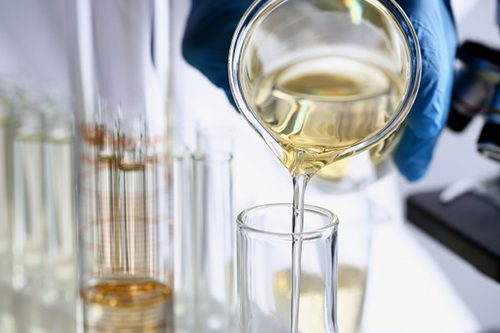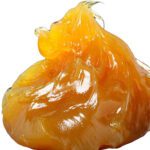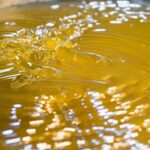Additive packages how they affect the performance of industrial lubricant

Lubrication professionals often become very familiar with the base oil viscosity of their lubricants. After all, viscosity is the most important property of a base oil. Baselines for incoming oils are set and the health of the lubricant is monitored based on viscosity alone. However, there is more to lubricants than just viscosity. It’s crucial to understand the role of additives and their function(s) within the lubricant.
Lubricant additives are organic or inorganic compounds dissolved or suspended as solids in oil. They typically range between 0.1 to 30 percent of the oil volume, depending on the machine.
Additives have three basic roles:
- Enhance existing base oil properties with antioxidants, corrosion inhibitors, anti-foam agents and demulsifying agents.
- Suppress undesirable base oil properties with pour-point depressants and viscosity index (VI) improvers.
- Impart new properties to base oils with extreme pressure (EP) additives, detergents, metal deactivators and tackiness agents.
When using oil additives, more is not always better. As more additive is blended into the oil, sometimes there isn’t any more benefit gained, and at times the performance actually deteriorates. In other cases, the performance of the additive doesn’t improve, but the duration of service does improve.
In addition, increasing the percentage of a certain additive may improve one property of an oil while at the same time degrade another. When the specified concentrations of additives become unbalanced, overall oil quality can also be affected. Some additives compete with each other for the same space on a metal surface. If a high concentration of an anti-wear agent is added to the oil, the corrosion inhibitor may become less effective. The result may be an increase in corrosion-related problems.
These include the following general types of additives:
1. Viscosity Index Improvers:
Viscosity index improvers are very large polymer additives that partially prevent the oil from thinning out (losing viscosity) as the temperature increases. These additives are used extensively when blending multi-grade engine oils such as SAE 5W-30 or SAE 15W-40. They are also responsible for better oil flow at low temperatures, resulting in reduction in wear and improved fuel economy. In addition, VI improvers are used to achieve high-VI hydraulic and gear oils for improved start-up and lubrication at low temperatures.
2. Anti-wear (AW) Agents:
These additives are typically used to protect machine parts from wear and loss of metal during boundary lubrication conditions. They are polar additives that attach to frictional metal surfaces. They react chemically with the metal surfaces when metal-to-metal contact occurs in conditions of mixed and boundary lubrication. They are activated by the heat of contact to form a film that minimizes wear. They also help protect the base oil from oxidation and the metal from damage by corrosive acids.
3. Extreme Pressure (EP) Additives:
These additives are more chemically aggressive than AW additives. They react chemically with metal (iron) surfaces to form a sacrificial surface film that prevents the welding and seizure of opposing asperities caused by metal-to-metal contact (adhesive wear). They are activated at high loads and by the high contact temperatures that are created. They are typically used in gear oils and give those oils that unique, strong sulphur smell. These additives usually contain sulphur and phosphorus compounds.
They can be corrosive toward yellow metals, especially at higher temperatures, and therefore should not be used in worm gear and similar applications where copper-based metals are used. Some chlorine-based EP additives exist but are rarely used due to corrosion concerns
4. Detergents:
Detergents perform two functions. They help to keep hot metal components free of deposits (clean) and neutralize acids that form in the oil. Detergents are primarily used in engine oils and are alkaline or basic in nature.
5. Dispersants:
Dispersants are mainly found in engine oil with detergents to help keep engines clean and free of deposits. The main function of dispersants is to keep particles of diesel engine soot finely dispersed or suspended in the oil. The objective is to keep the contaminant suspended and not allow it to agglomerate in the oil so that it will minimize damage and can be carried out of the engine during an oil change.
6. Anti-foaming Agents:
The chemicals in this additive group possess low interfacial tension, which weakens the oil bubble wall and allows the foam bubbles to burst more readily. They have an indirect effect on oxidation by reducing the amount of air-oil contact.
7. Friction Modifiers:
Friction modifiers are typically used in engine oils and automatic transmission fluids to alter the friction between engine and transmission components. In engines, the emphasis is on lowering friction to improve fuel economy. In transmissions, the focus is on improving the engagement of the clutch materials. Friction modifiers can be thought of as anti-wear additives for lower loads that are not activated by contact temperatures.
8. Pour Point Depressants:
The pour point of an oil is approximately the lowest temperature at which an oil will remain fluid. Wax crystals that form in paraffinic mineral oils crystallize (become solid) at low temperatures. The solid crystals form a lattice network that inhibits the remaining liquid oil from flowing. The additives in this group reduce the size of the wax crystals in the oil and their interaction with each other, allowing the oil to continue to flow at low temperatures.
9. Demulsifiers:
Demulsifier additives prevent the formation of a stable oil-water mixture or an emulsion by changing the interfacial tension of the oil so that water will coalesce and separate more readily from the oil. This is an important characteristic for lubricants exposed to steam or water so that free water can settle out and be easily drained off at a reservoir.
10. Biocides:
Biocides are often added to water-based lubricants to control the growth of bacteria.


